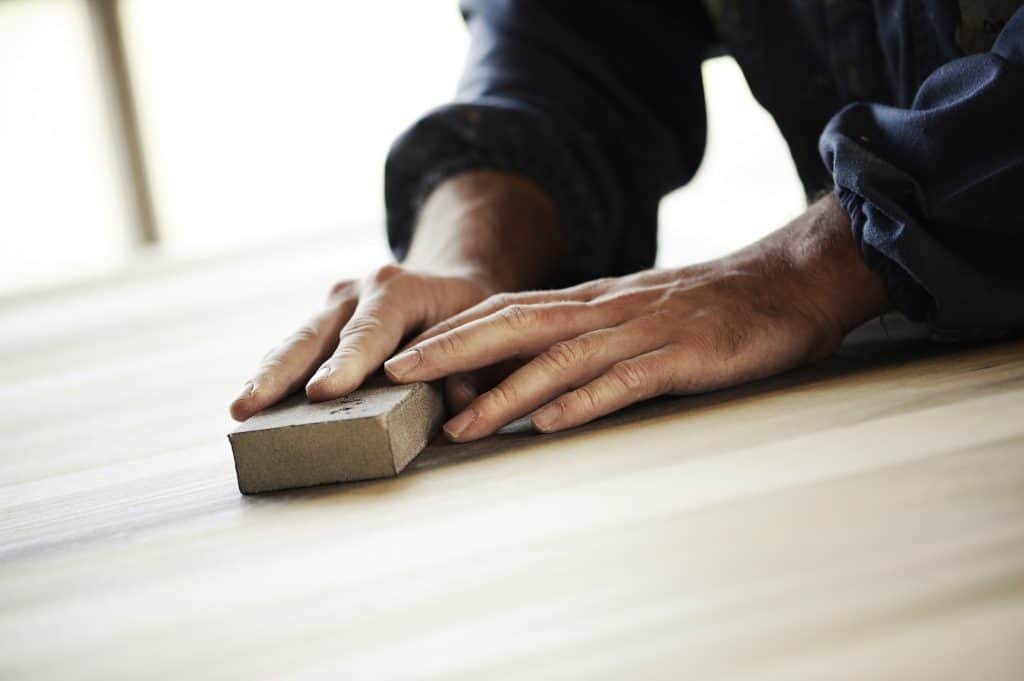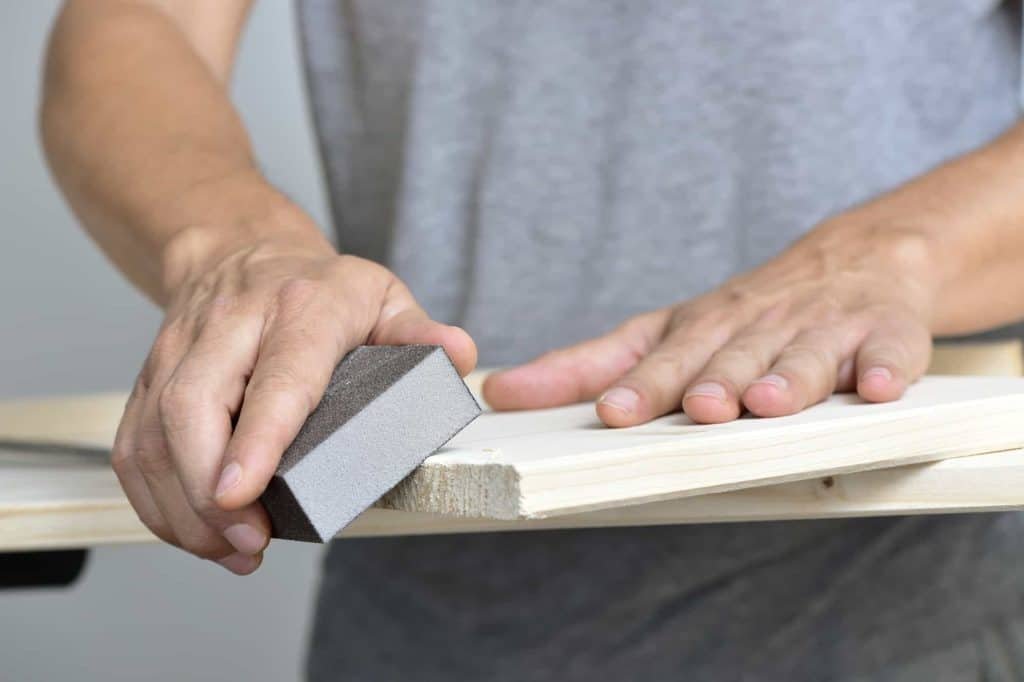Here’s one of those ‘so obvious you daren’t ask’ type questions that I get all the time. You’re supposed to know what a sanding block is, even if you’re not a pro – yet I get a lot of people asking me what one is, how to make one, and what you’re supposed to do with it.
What a Typical Sanding Block Is Like
A sanding block or sanding sponge is the most important tool in your arsenal when you are refinishing furniture or doing other fine work when dry sanding.
They’re usually made from foam rubber or solid wood with an abrasive surface (usually sandpaper) attached to them. Rubber sanding blocks are the most common these days.
It’s usual for sanding blocks to have different grits of sandpaper on one side of the block so that you can get more control over how much material gets removed by each pass.
Typically, the finer the grit sandpaper on the block you are using, the more control and finesse it will give you. Sanding blocks come in all shapes and sizes; some are made specifically for woodworking while others are designed for general purposes like painting. Some even include an attachment so they can be used as a scraper.
It’s important to use a sanding block that is soft enough so that it won’t damage your workpiece. You can also wrap the sandpaper around a dowel or scrap of PVC pipe to get the right shape and size. A “block” doesn’t always have to be a rectangle!

Typical Jobs a Sanding Block is Used for:
Sanding blocks are generally used when the job is too delicate or detailed, even for a sanding mouse or detail sander. Some of the tasks where you might use a sanding block or a sanding sponge include:
- wood finishing (of course!) but over a small area
- refinishing cabinets
- working on curves or corner sanding
- Returning moldings to an original profile
- smoothing out irregular surfaces on small pieces
- getting into hard to reach areas
- removing fine scratches from surfaces such as glass & metal
- cleaning up small areas like joints or detail work
- preparing intricate wooden parts before staining or painting
- making sure all edges are smooth after cutting
- smoothing out rough spots on various flat surfaces
Advantages of a Sanding Sponge or Block over Power Sanding
There are a couple of advantages to using a sanding block rather than reaching for your power sander. These include being more accurate (less likely to over sand and round over edges), or giving you better control and precision for consistent sanding. When it’s done right, it’s what “hand sanding” is all about.
Sanding blocks are also very good at working in small areas, such as carving out door hinges or smoothing the gaps where trim starts – places impossible to reach with any machine. They’re also quiet!
Additionally, sanding blocks are cheap. You can typically pick one up anywhere for under $5 and you probably have some pieces of old scrap wood and regular sandpaper lying around that will work just as well.
How to Make Your Own Sanding Block
You can make a sanding block yourself from old cutoffs of wood, or you can also purchase them at any hardware store or home center. If you are going to make your own, buy sandpaper that matches the type of work you will be performing.
A piece of wood measuring around 3/4 in. x 1-1/2 in. x 4-1/2 in is around the right size to get you started.
Cut the wood to size and attach sandpaper with contact cement, or by using a hot melt glue gun. To improve the grip of your sanding block, use a rubber mat like the ones used for under office chair wheels on each side where your grip will be, if you think you’ll be using it a lot.
Note that I permanently fix the sandpaper to the block and then just rip off a new sheet when needed–much simpler and cheaper, or maybe I’m just lazy!

Why Bother With a Sanding Block?
Overall, sanding blocks have many advantages, but they are not for everyone. They can be a little difficult to master the first few times you use them. You will definitely want to practice sanding different types of materials before trying it on an expensive piece.
Some people have a more ‘purist’ approach and only ever sand by hand. With the proliferation of affordable power sanders like palm sanders or detail sanders, however, there’s not as much need to use sanding blocks these days.
However, if you’re into old-school methods and want that traditional touch in your workmanship, they still have their place! I love mine and wouldn’t be without them.

